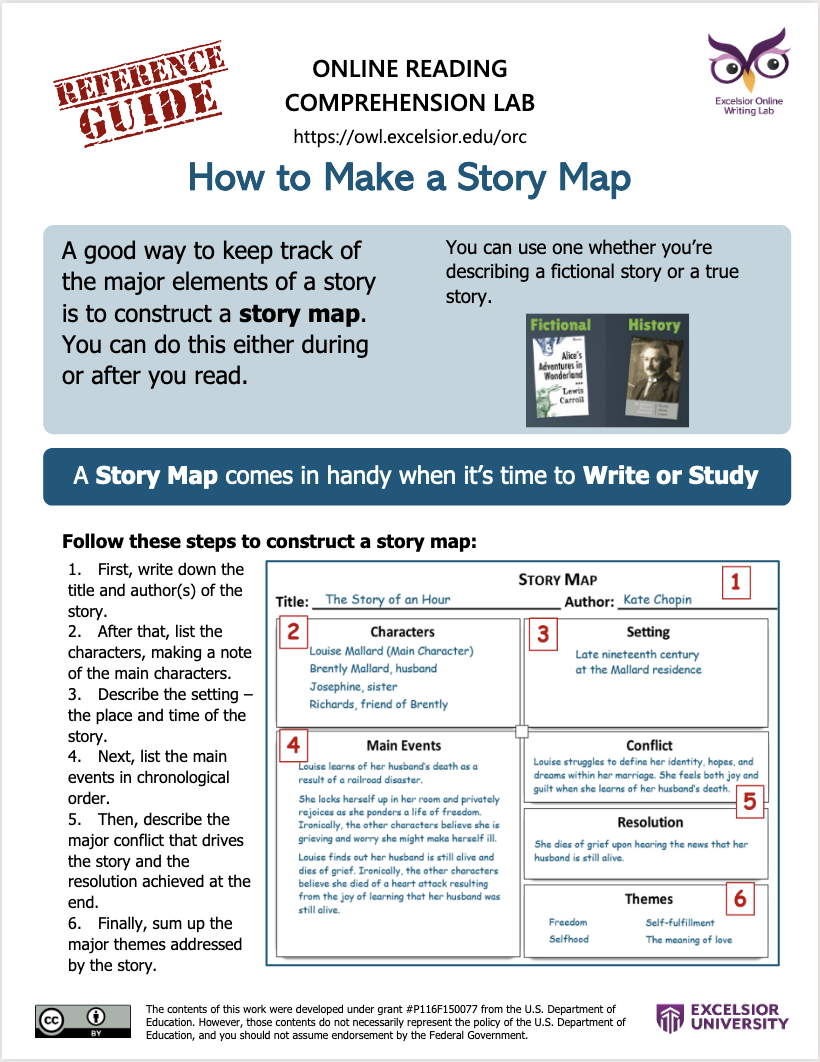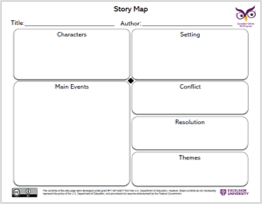The contents of this web page were developed under grant #P116F150077 from the U.S. Department of Education. However, those contents do not necessarily represent the policy of the U.S. Department of Education, and you should not assume endorsement by the Federal Government.
Learn how to make a story map to improve your understanding of narrative-based texts like novels, short stories, and histories.
| 0:00 | Owl: Welcome to How to Make a Story Map, an instructional video on reading comprehension brought to you by the Excelsior University Online Writing Lab. |
| 0:13 | Have you ever read a story and forgotten or been confused about its major elements? |
| 0:18 | A good way to keep track of the major elements of a story is to construct a story map. |
| 0:23 | You can do this either during or after you read. |
| 0:27 | Story maps can help you identify the major elements of a story. |
| 0:30 | You can use one whether you’re describing a fictional story or a true story. |
| 0:35 | And a story map can help you remember this information later, when it comes time to write or study. |
| 0:42 | In this example, we’ll construct a story map for Kate Chopin’s “The Story of an Hour.” |
| 0:48 | First, write down the title and the author or authors of the story. |
| 0:54 | After that, list the characters, making a note of the main characters. |
| 1:02 | Describe the setting—the place and time of the story. |
| 1:09 | Next, list the main events in chronological order. |
| 1:16 | Then, describe the major conflict that drives the story and the resolution achieved at the end. |
| 1:26 | Finally, sum up the major themes addressed by the story. |
| 1:31 | That’s it! |
| 1:32 | The next time you read a story, whether fictional or real, remember to create a story map to help you remember key information. |
| 1:39 | You can download a story map template here. |
| 1:46 | Thanks for listening to this instructional video on How to Make a Story Map! |
| 1:51 | Visit the Excelsior University Online Writing Lab for more support with reading and writing skills. |
The following text was sampled in this video:
Chopin, Kate. “The Story of an Hour.” 1894.



